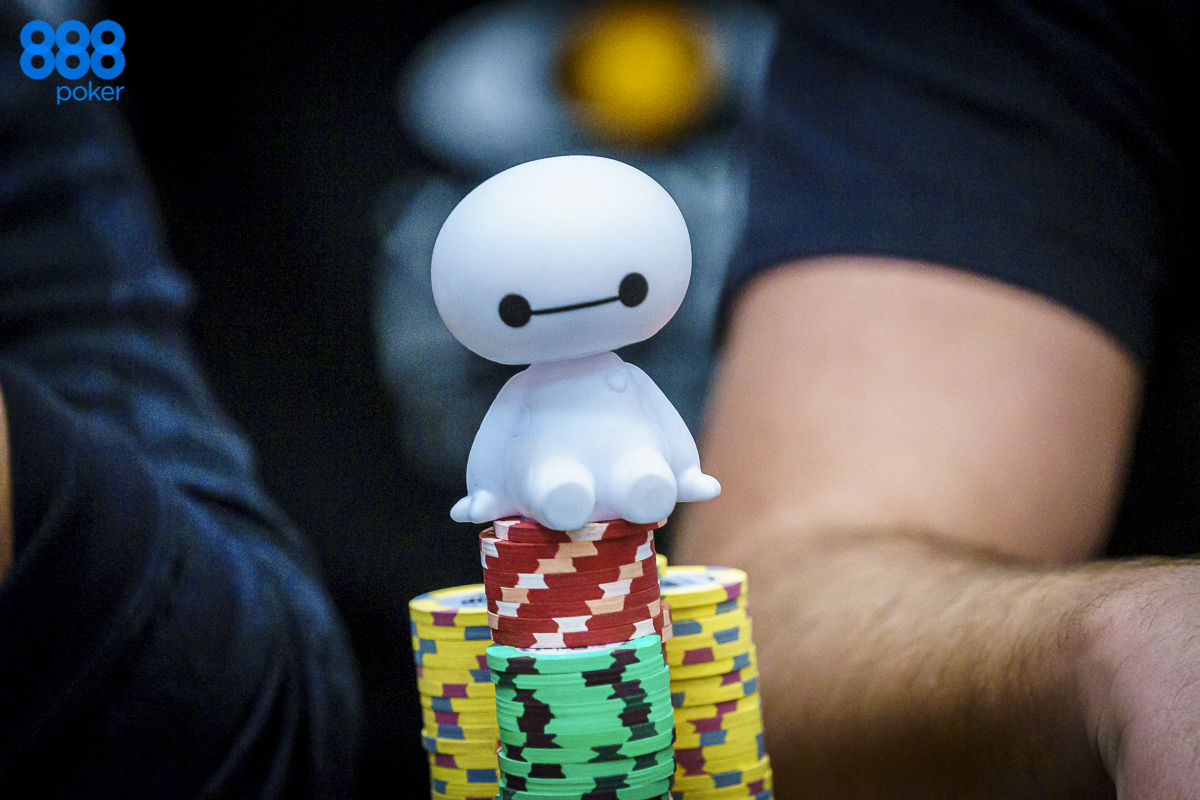One of the great ironies of poker is that even the best players don’t precisely know which hands they should be playing preflop.
They have a good idea, better than their opponents. But they don’t know exactly.
Although this has not changed, GTO solvers allow us to understand with greater accuracy than ever before the types of hands we should be playing preflop. Like the Beginner's Guide to GTO Poker that we did.
In this article, we’ll see a specific set of RFI (raise-first-in) ranges calculated by a poker solver.
Game Tree Considerations
When we talk about a solved set of ranges, we are referring to a group of ranges for a given game tree.
A game tree is a representation of all the possible actions that might take place in a hand of poker. There are so many things that can happen in a single hand. So, it’s not feasible for a computer to deal with all possible actions.
We simplify the game tree to make things practical. The following are examples of simplifications that might occur when running a preflop solve:
- Limiting players to a single bet size in specific postflop situations.
- Removing the preflop option to cold-call from particular positions.
Such adjustments make the game tree more manageable and allow us to solve for sets of preflop ranges in a reasonable time frame. The downside is that game tree simplifications decrease the accuracy of the end result (preflop ranges in this case).
Even with significant simplifications, the preflop ranges we get are more accurate than anything before the availability of poker solvers.
Let’s look at our raise-first-in strategy from each position at the table.
Open Raising Ranges
Lojack Raise-First-In (RFI)
Solver recommended raise first in frequency: 17.9%

When a holding mixes into the folding range, the EV (expected value / average profit) of opening is zero.
For example, the solver says we should open 22-55 some of the time. In the world of solvers, this also implies that when we do open, we should expect the EV to be precisely 0 (the same as folding).
- A solver can only take different lines with the same holding if it expects both lines to carry the same EV.
- So, why does the solver bother opening these hands if it expects the EV of opening to be 0?
It’s for balance reasons.
Although open-raising 22 won’t make us any money, if we didn’t open-raise 22, our opponent would potentially be able to exploit our strategy.
Overall, the range is relatively strong, mainly consisting of suited broadways, pocket pairs, suited Aces, and some off-suit broadways.
Hijack Raise-First-In (RFI)
Solver recommended raise-first-in frequency: 22.7%

Now all suited aces, all pocket pairs and most off-suit broadways are open-raised. The solver is beginning to introduce suited kings and additional suited connectors/gappers into the raising range.
It can be worth remembering that the solver doesn’t consider many of these hands especially crucial. It calculates that the EV of the suited aces (A9 and lower) are all less than 0.1 of a big blind, on average.
The only hands generating more than 0.25bb in expectation are 88+, ATs+, KJs+ and AKo. So, we could probably raise quite a bit tighter than the solver and still generate a very good winrate.
- This reasoning assumes our opponents aren’t good enough to exploit the fact that we are opening too tight. But this assumption is not unrealistic in many games.
The counter-argument is that we should play wider than the solver in many spots since our opponents are playing much worse than the solver assumes. (The solver presumes we are always playing against perfect GTO opponents).
CO Raise-First-In (RFI)
Solver recommended raise-first-in frequency: 30%

We might describe this range as ‘equity-driven’. The solver prefers holdings such as A8o over what we might refer to as ‘playable’ holdings like 54s.
A hand such as 54s is a standard open-raise for many players in the cutoff. But the solver says you should only open some of the time from this position.
Note that A5o is often valued above A7o and A6o type holdings. The increase in the rank of the side card is pretty marginal for A7o/A6o.
But A5o has the potential to make the wheel (ace-to-five straight).
BTN Raise-First-In (RFI)
Solver recommended raise-first-in frequency: 43.3%

The button is the best position at the table, and the solver opens relatively wide.
Despite opening speculative holdings such as 85s and 64s, the solver does not open A3o and A2o. These hands are standard open-raises for many players.
This strategy is not to say we can’t open such holdings profitably in practice. Since our opponents in the blinds will not be perfect GTO players, we can often get away with opening over 50% of holdings on the button.
SB Raise-First-In (RFI)
Solver recommended raise-first-in frequency: 40.9%

We might immediately notice something unusual about the SB RFI range. Most hands are not raised with 100% frequency. The SB is a unique position at the table where limping (known as completing in this context) is a valid and theoretically correct strategic option.
- The solver recommended completing frequency in this scenario is 4.2%.
- All the hands that open raise are also completed with some frequency.
- Generally, weaker holdings are completed more frequently (perhaps 10% of the time).
- In comparison, the stronger holdings are completed less regularly (perhaps 5% of the time).
- The rest of the time, these hands raise first-in.
Recommended RFI Sizings
Preflop solves won’t automatically tell us the best open-raise sizing from each position. Including multiple options for RFI sizing would result in an overly large game tree.
But it’s possible to run multiple solves and ascertain the expected value of different individual RFI sizings.
Solver analysis indicates that larger open raises are more profitable in later positions.
- So, a 2.5bb or 3bb open-raise from the button and small blind positions will outperform a min-raise.
- Conversely, min-raises from the earlier positions at the table outperform larger raises.
This approach is opposite to many commonly accepted sizing strategies. Until recently, most players assumed that we should use larger open-raise sizings from the early positions but smaller sizings in the late positions.
It turns out that the logic behind solver-recommended RFI sizings might be straightforward. Later positions at the table are more profitable. So, optimal play involves investing more chips preflop from these positions.
Why Do Solved Ranges Differ?

We may have access to another set of solved preflop ranges and wonder why they differ from the ranges documented here. After all, if we are looking at an optimal solution to poker games, shouldn’t all solved preflop ranges be identical?
Note the following reasons why preflop solves don’t align (at least, not precisely):
- Different Game Trees. As mentioned above, the preflop and postflop game trees might be constructed differently. So, the resultant output will be different.
- Different Solver Accuracy. Solves are generally run to a high level of accuracy but not to 100% accuracy. Solving to 100% accuracy would take a lot longer but not dramatically increase the quality of the output. So, the solver output will vary depending on where the solver stopped the process.
- Different Stack Sizes. Not all preflop solves are for 100bb cash games. If we give the solver a different stack depth, the resultant preflop ranges will be slightly different.
- Different Rake. Specifying the rake % and rake cap when running solves is possible so we can mirror the solve around specific games. Higher-limit games typically have lower rake, meaning we can play slightly wider preflop ranges.
Exploitative Considerations
The GTO RFI ranges are a great starting point and should form a solid baseline for formulating our strategy.
For best results, we should deviate from these RFI ranges based on our opponents’ mistakes.
Here are a couple of example:
Button RFI
The solver raises 43.3% of hands. But many big winners raise above 50% of the time on the button.
The simple reason is that some opponents will play poorly from the blinds.
They might be -
- Folding too often vs button steals
- Making big mistakes postflop
Both are good reasons to raise a broader range of holdings from the button than the solver recommended 43.3%.
SB Completing
In the above model, our solver only completes 4.2% of the time. This setup assumes that BB is correctly raising above 40% of the time when facing a SB complete.
Data analysis reveals that the average player is raising closer to 27% of the time from the BB in this scenario. We hence get to see a flop way more frequently than the solver expects.
This information allows us to profitably complete a broader range of hands from the SB compared to solver recommendations.
Putting it Together
Solved preflop ranges are an excellent tool for informing our baseline strategy. For best results, we should tweak these baseline ranges depending on our opponents’ tendencies.
We should also pay attention to the overall picture of the range rather than tiny details in the weightings of various hands.
Slight differences in ranges might be a function of the game tree or the level of accuracy of the preflop solve run.


